With the release of our new study, we’re kicking off Hubstaff’s freelancing month 2017! Throughout June, we’ll be featuring articles by experienced freelancers about how they get clients, manage their workload, and more. Be sure to check out the rest of our freelancing month posts when you’re done with the study.
Whether you’re an experienced freelancer, just getting started in the field, or considering a career change from full-time employment to independent contracting, your future looks promising. Studies show that the gig economy is growing at a rate 27% higher than that of full-time jobs.
Freelancing is here to stay. And many people seem to have picked up on this fact. But there are a lot of things that are less clear. What are the industry trends? How much do freelancers really make? What factors go into a successful career? What does the data say about all of this?
That’s what we set out to learn.
Table of contents
Want the short version? Jump down to the infographic!
Boost your team’s efficiency with Hubstaff's productivity tools
Why we undertook this study
Freelancers and agencies are our most valued clients. Hubstaff was founded to both enable and simplify freelance and remote-work relationships. Our entire team is 100% remote. Many of us have worked as freelancers. We have a deep understanding of the needs, pain points, and intricacies of earning a living as an independent contractor.
Hubstaff Talent, our resource for connecting freelancers and businesses, is available—for free—to everyone. It’s grown rapidly since launch. In fact, we recently added our 17,000th freelancer to the platform. It’s been a great journey.
To celebrate our milestone of hitting 15,000 freelancers, we wanted to start an annual tradition: Hubstaff’s Freelancing Trends.
Each year—starting in 2017—we’ll conduct a study on freelancing trends. With it, we hope to provide insightful data on pay rates, work experiences, factors that help freelancers land gigs, signs a client relationship isn’t going to work out, and much more.
Our 2017 Freelancing Trends report will help you
- uncover which industries hire the most freelancers
- understand average freelancing rates
- learn which factors lead to higher pay rates
- discover which types of jobs tend to be the most profitable
- identify ways to increase chances of scoring a new gig
- pinpoint client relationships that are destined to fail
Whether you’re currently freelancing or not, we hope this report provides valuable insights that help you grow your career, your client base, and your income.
Data sources and methodology
We used two sources to collect the data for our 2017 report:
- Hubstaff Talent’s database of over 17,000 freelancers
- Interviews and surveys of more than 300 top-rated freelancers from almost a dozen industries
While the Hubstaff Talent database answered questions about freelancers’ rates and experience, it didn’t provide answers to subjective questions like how to land gigs or identify bad clients. For these answers, we needed to talk to people.
Our goal was to derive—and provide—insights that had not been previously explored. Many studies discuss freelancer demographics, experience, and average rates. But we wanted to dive deeper and seek answers to more insightful and actionable questions:
- Does having a personal website lead to higher-paying jobs?
- How do freelancers improve their chances of landing gigs?
- What types of jobs are the most profitable?
The only solution was to run a survey.
However, we didn’t want to administer a survey based on our own assumptions and experiences. We wanted both the questions and answers to reflect the reality of freelancing trends without bias.
So we started by interviewing freelancers—those who have been both successful and unsuccessful in their careers—to better understand their experiences.
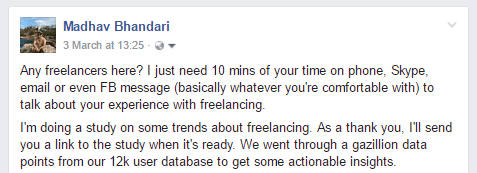
The outcome of those interviews led to a survey that was built by and for freelancers. We solicited responses to the survey from freelancers on Hubstaff Talent, on Reddit, through LinkedIn groups, and more. By the end, more than 300 freelancers from nearly a dozen industries had completed the survey.

The survey responses—combined with the data from Hubstaff Talent—provided the exact types of actionable insights we’d hoped for. Let’s dive in!
About the freelancers
In another effort to avoid bias in our study results, we wanted to ensure diversity in respondents.
Luckily, in analyzing the backgrounds and locations of the responding freelancers, we found that we’d managed to solicit data from freelancers in a wide range of locations, from a number of industries, practicing in a variety of disciplines.
Where do freelancers live and work?
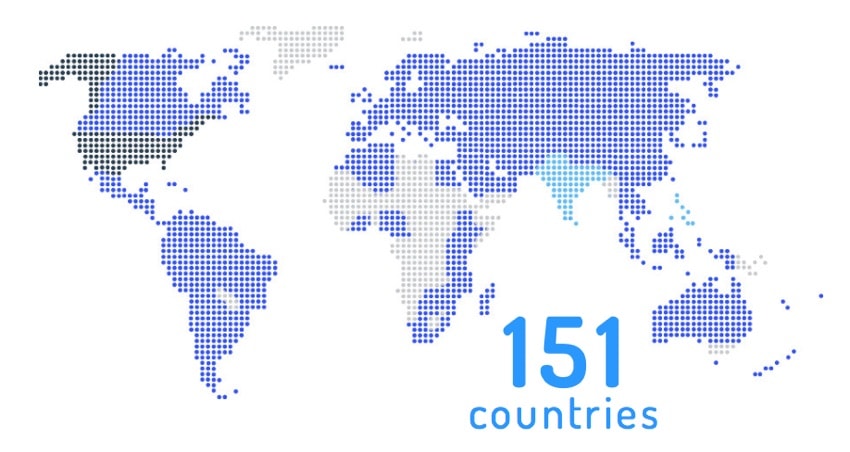
Freelancers who participated in the study spanned the globe. Responses were provided by residents of 151 countries, including the U.S., the Philippines, India, and Russia.
What industries do freelancers work in?
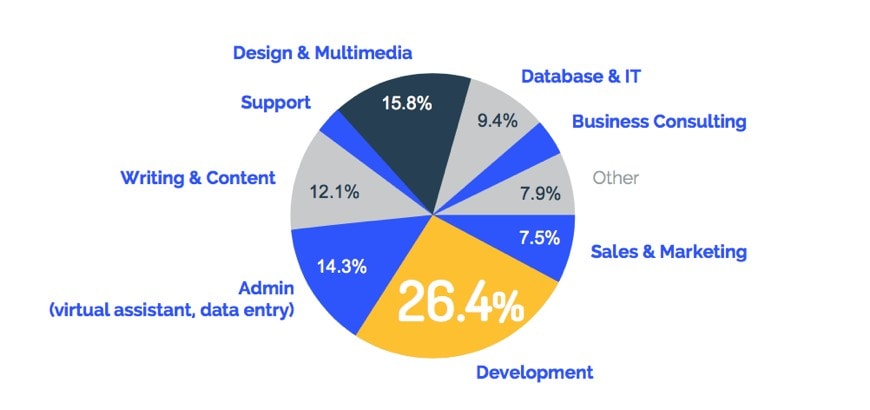
Respondents provide a variety of services, including development, writing, marketing, administrative, and consulting, across a diverse set of industries. The highest number of responses came from developers (26%), with sales and marketing freelancers coming in second (16%).
How experienced is a successful freelancer?
We wanted to make sure that our responses came from experienced freelancers. Anyone could pick up a couple of freelance gigs from time to time to supplement a full-time income, but responses from those individuals don’t represent industry trends. Luckily, we discovered that the freelancers who responded were highly experienced, dedicated freelance professionals.
We received responses from individuals who’ve been working as freelancers for periods spanning a few months to over 40 years, with the average level of experience around six years:
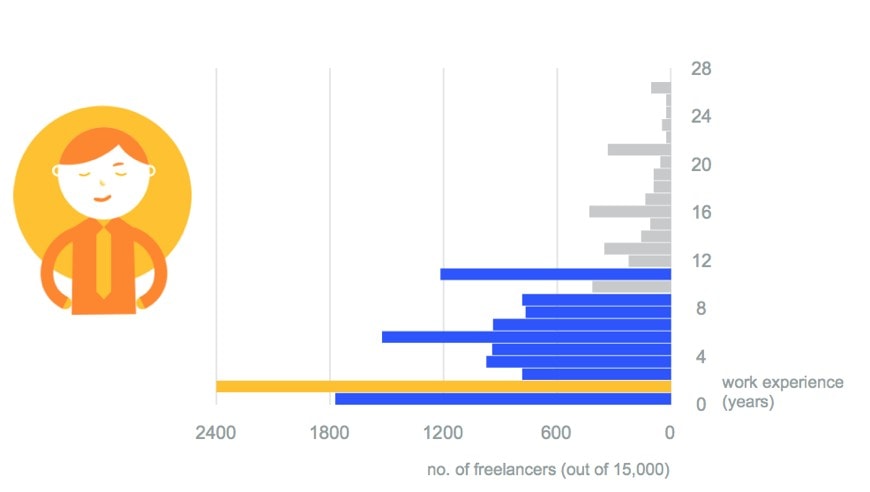
Additionally, most responses (40%) came from freelancers who have completed more than 20 freelance projects over their careers.
Finally, to analyze the quality of the advice our freelancers were providing, we wanted to know how often they land gigs they apply for. We discovered that the number of opportunities they land is very high. On average, our respondents win more than half of the jobs (5.4 out of 10) that they pursue:
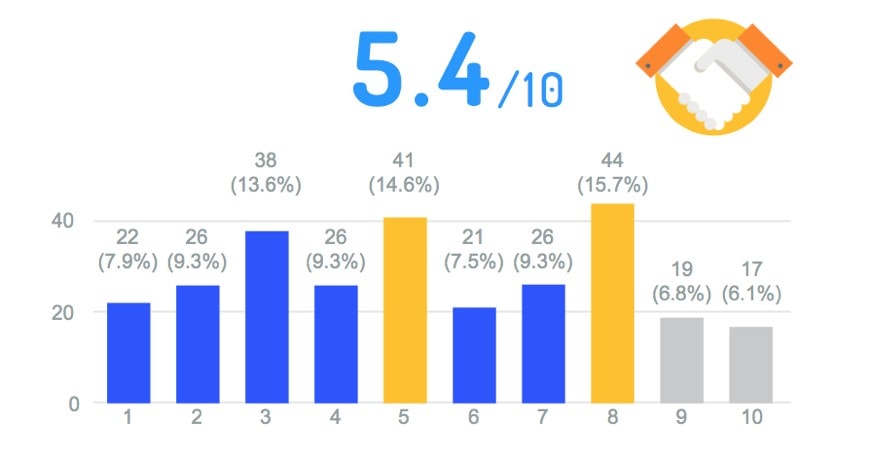
After reviewing these demographics, we felt confident that the data collected was comprehensive, represented a healthy balance of industries and practices, and was an excellent representation of freelancing trends as reported by practicing and experienced industry professionals.
Average rates for freelancers in different industries
Now that we know more about the data and respondents, it’s time to get into the good stuff: what are the average hourly rates for freelancers?
To be honest, we were surprised by the results. If you’ve perused other reports that list average rates for freelancers, you’ve probably run across rates that would run off all your existing clients and prevent you from ever landing a new job.
If so, our results may be refreshing. We discovered that most of our freelancers’ rates are quite reasonable.
Location plays a major role in average rates, with freelancers in Great Britain commanding the highest average rates (more than $46 per hour), and those in the Philippines earning the lowest average hourly rate (less than $12 per hour).
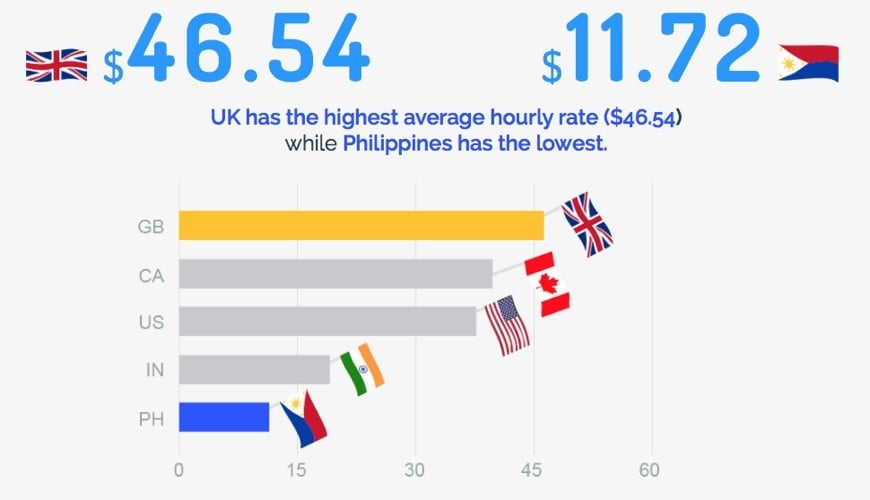
Average freelancing rates by country:
- Great Britain: $46.54
- Canada: $40.17
- United States: $37.87
- India: $19.12
- Philippines: $11.72
Experience also factors into the rates freelancers charge. For example, marketing industry freelancers with fewer than two years of experience earn an average of $17 per hour, but those with more than ten years of experience earn an average of $52 per hour.
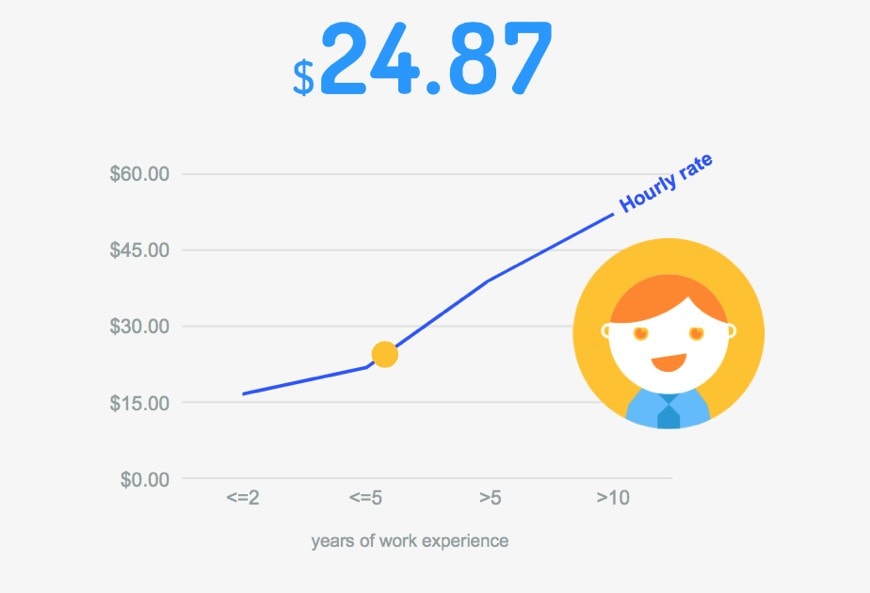
Marketers with
- two or fewer of experience charge an average hourly rate of $16.97
- five or fewer years of experience charge an average hourly rate of $21.80
- 5–10 years of experience charge an average hourly rate of $39.27
- more than 10 years of experience charge an average hourly rate of $52.15
Overall, the average hourly rate for freelance marketers is $24.87. For freelance developers, the average rate is slightly higher at $27.86, but experience plays a role in the rates for this discipline as well:
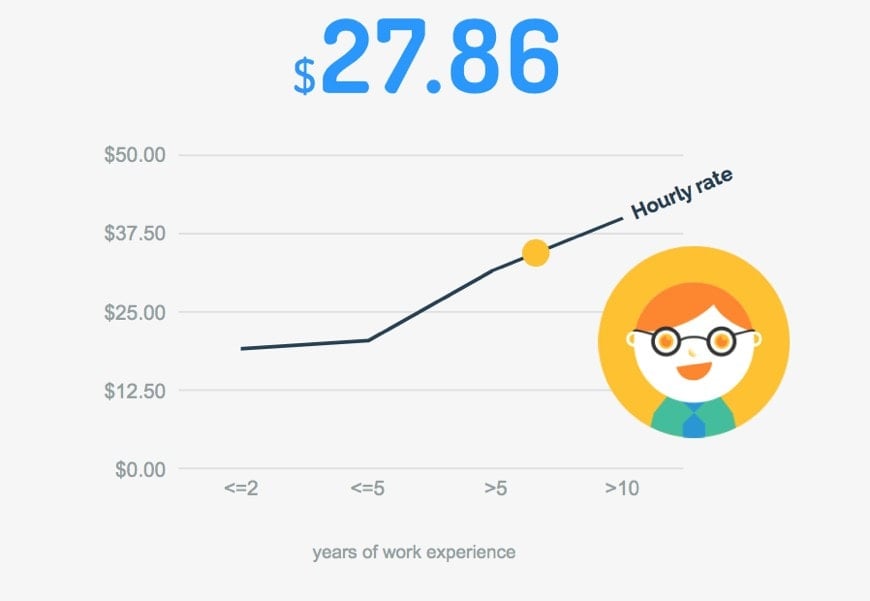
Developers with
- two or fewer years of experience charge an average hourly rate of $19.44
- five or fewer years of experience charge an average hourly rate of $20.80
- 5–10 years of experience charge an average hourly rate of $31.97
- more than 10 years of experience charge an average hourly rate of $40.36
Interestingly, while freelance developers begin their careers commanding higher rates than freelance marketers, marketers eventually surpass the hourly rates of developers.
Actionable takeaways
Now that we’ve reviewed the data, let’s take a look at what insights it provides:
- The rates that freelancers charge are highly dependent on location, discipline, and experience, so it’s impossible to provide average rates that dictate what freelancers should be charging across the board.
- In areas where cost of living is lower, freelancers charge at lower rates. In areas where cost of living is higher, freelancers may be able to charge more.
- The location of the client may also play a part, but clients often seek freelancers outside of their area as a means of reducing costs. As such, freelancers should set rates that are reasonable for supporting their own cost of living.
- Freelancers should review their rates regularly to evaluate if the experience they’ve accrued supports a rate increase.
Factors that contribute to higher rates
While location and experience influence hourly rates, we discovered that two other factors play into the rates freelancers command. Specifically, highlighting your work on a business or personal website—or with a GitHub profile—can significantly increase the rates you charge.
Freelancers with websites charge, on average, 65% more than those without websites. While the average hourly rate for freelancers without sites was $20.57, the average for freelancers with websites was $33.90.
That means that freelancers with websites who work 40 hours a week earn nearly $28,000 more annually than full-time freelancers without websites.
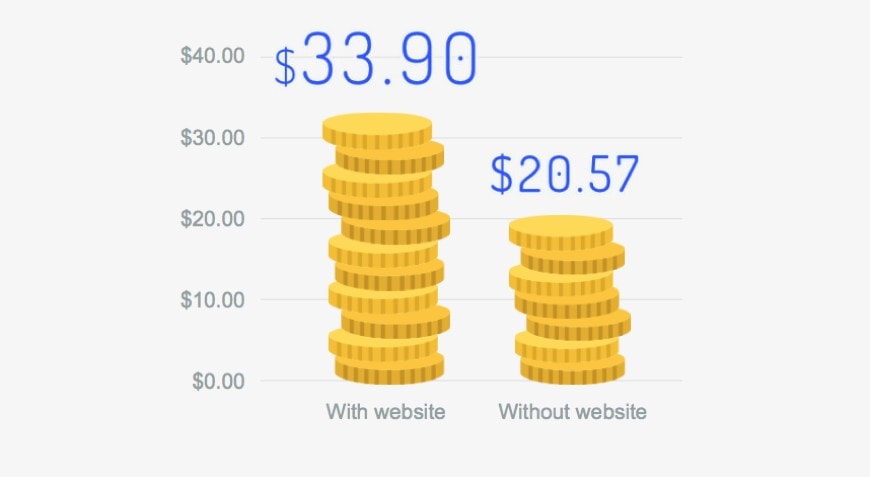
Developers with and without GitHub profiles are in a very similar situation. Freelance developers with GitHub profiles earn an average of $36.13 per hour—$8.27 more per hour than the average hourly rate of $27.86.
Subscribe to the Hubstaff blog for more tips
Actionable takeaways
Some of the factors that contribute to increased rates are location and experience—things that can’t be changed overnight.
However, you may be able to charge and earn more if you build a site where you can showcase your work. That might be a professional website for marketers or writers, a GitHub profile for developers, or a Behance profile for designers.
Finding work and landing gigs
Commanding higher rates is wonderful, but before you can earn, you have to find work. Looking for new work and winning over prospective clients is a huge part of the life of a freelancer, and unfortunately, work you don’t get paid for
When you land the client, all of the back-and-forth messaging, trials, and meetings seem worth it. When you don’t, you’ve spent a lot of time earning very little—or nothing.
Is it possible to eliminate some of that waste by focusing efforts on gigs you’re more likely to land? We asked our freelancers to find out.
What factors indicate an increased likelihood of landing a freelance gig?
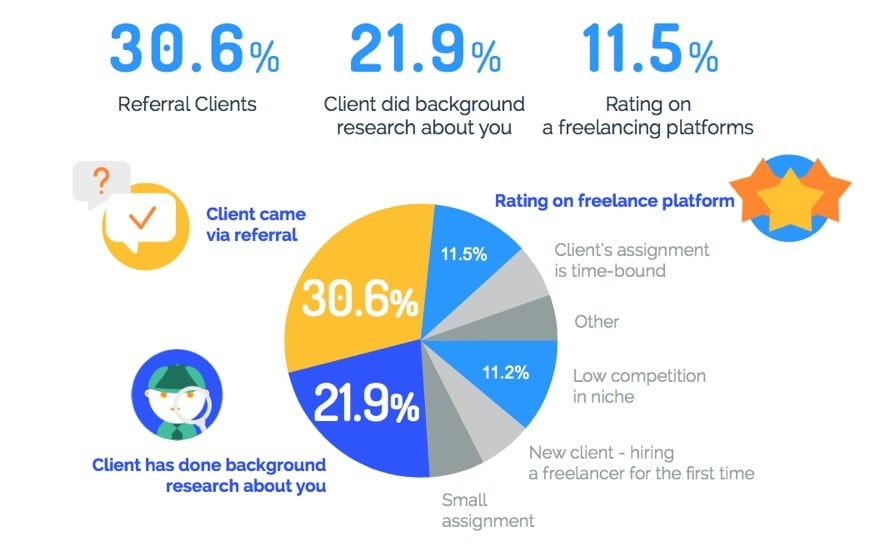
Prospects that come through referrals were by far the most likely to convert to clients at 30%. Prospects who have conducted background research on you—viewed your profiles, websites, and samples—came in second at 22%. High ratings on freelance platforms (11%) and low competition in your niche (11%) were also strong indicators of getting the job.
What factors indicate that you’re unlikely to get the job?
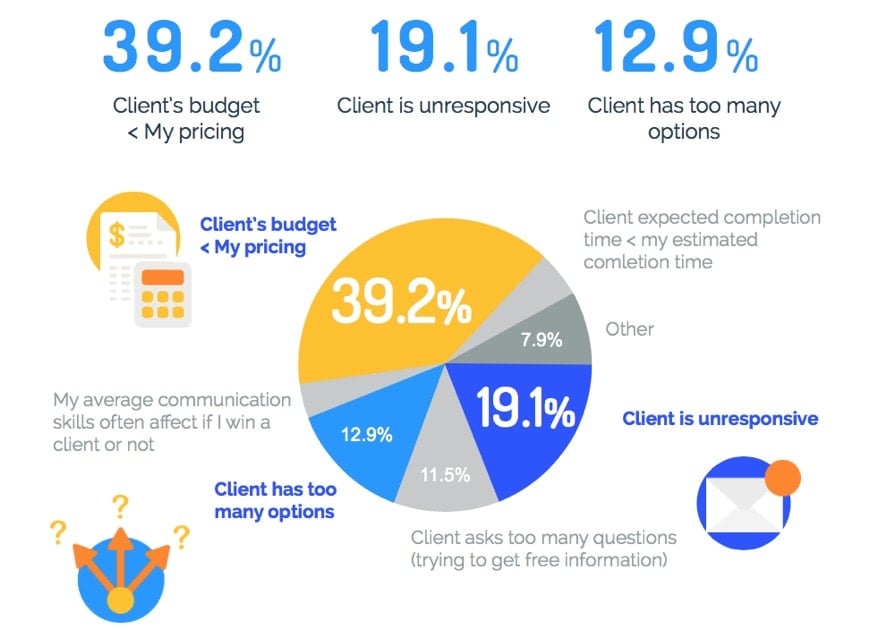
Responses to this question showed that pricing discrepancies (when your rate exceeds a client’s budget) are most likely to result in being passed on for gigs, accounting for nearly 40% of failed opportunities. Not hearing back from prospects in a timely manner is also a strong indicator that you’re not being considered—coming in at almost 20%.
Other indicators that an opportunity isn’t worth pursuing are high levels of competition for the job (13%), and clients that ask too many questions before awarding you the gig (12%).
Another thing to consider when perusing open opportunities is the potential profitability of the job. Certain jobs are more profitable than others, and focusing on applying for those that are more likely to be profitable can save you time and effort.
Which jobs are the most profitable?
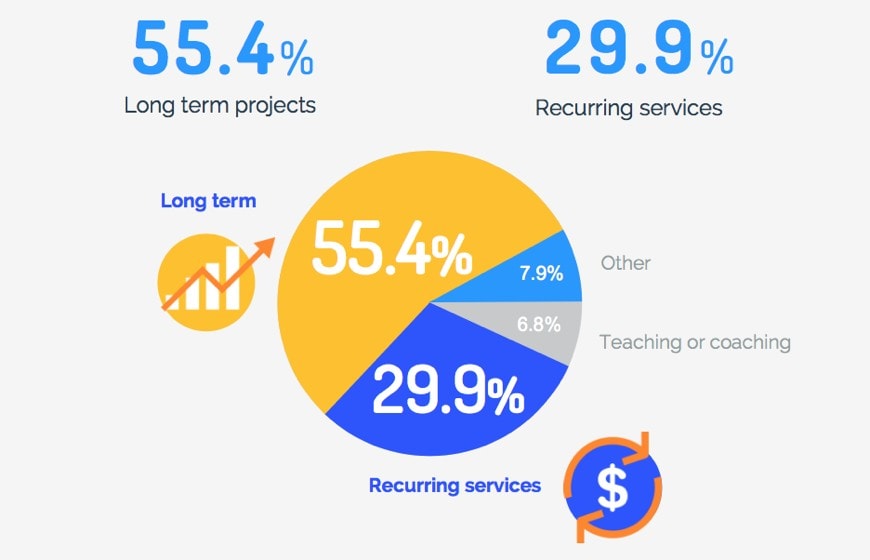
Long-term and recurring projects were the obvious winners here, accounting for a whopping 85% of responses. Surprisingly, teaching and coaching jobs were third on the list, receiving nearly 8% of responses.
Actionable takeaways
Freelancers can minimize wasted time and earn more money by focusing their efforts on the jobs that they’re more likely to land, and applying for the types of jobs that are more profitable:
- Focus your efforts on delighting existing clients. This will increase the likelihood that existing clients will send you referrals, and will earn you higher review scores on freelancing platforms.
- If you have a website, including testimonials from existing clients can help you win new clients by providing social proof of your capabilities and expertise.
- Transparency in rates may be beneficial. Listing examples of your rates on your profile or website ensures that prospects who reach out to you are more likely to be willing and able to pay for your services.
- Prioritize prospects who’ve reached out to you over ones you’ve reached out to. If a prospect contacts you unexpectedly through your website or professional portfolio, they’ve probably conducted thorough research on you and will be more likely to hire you.
- While it’s tempting to apply for roles where a client’s specified budget is lower than what you charge—imagining they’ll see your experience and become willing to pay the higher rate—it is likely a waste of your time.
- If you see that competition for an open role is fierce, you may be better off not applying. Better yet, focus on a niche skill with low competition to increase your likelihood of landing open roles.
- Look for long-term or recurring jobs to increase profits. If you have multiple long-term or recurring gigs, you can focus more time on doing the work that gets you paid—and less time on finding new clients.
- Consider teaching the skills you practice, or adding consulting services to your offerings. Some businesses have employees who can do the work, but they need experienced consultants to guide them. You may also want to consider creating tutorial videos and monetizing them through YouTube, Skillshare, or Udemy.
Identifying clients and projects to avoid
In a perfect world, clients would be able to tell you exactly what they want, would always pay for services provided, and would never retaliate on failed working relationships with negative reviews.
But as all freelancers know, it is not a perfect world.
Sometimes things don’t work out because you didn’t get the job. Though always disappointing, that’s expected. Other times, though, things don’t work out because clients make unreasonable demands, refuse or neglect to pay for services, or have absolutely no idea what they need.
Bad clients come on a spectrum from the uninformed to the downright emotionally unstable. If possible, it’s best to identify bad clients early in the relationship. But they can be hard to pick out. Sometimes you have to look for subtle signals that a working relationship is headed downhill.
What are some signs of a bad client?
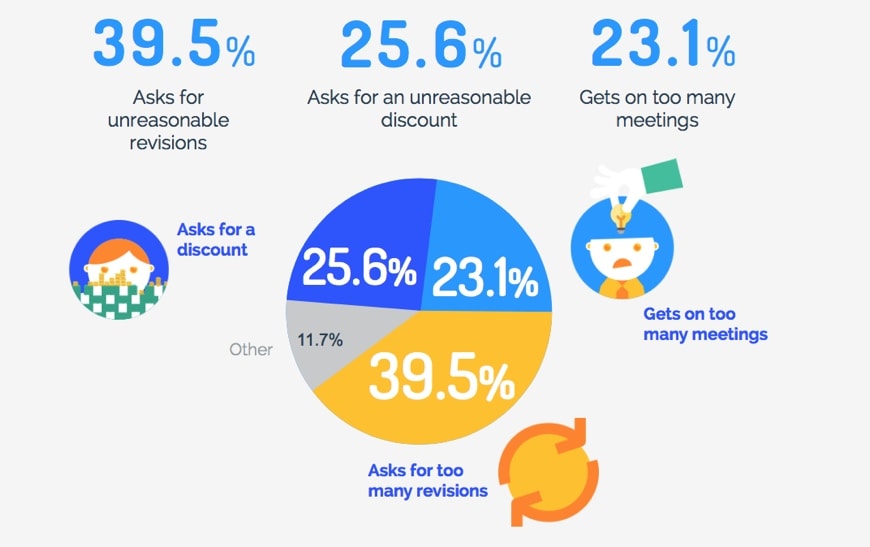
When we asked our respondents what signs they look for to identify bad clients, the number one response was clients that ask for too many revisions (40%). Asking for a discount is another very bad sign (26%), as is requesting too many meetings (12%).
Clients that ask for too many revisions are usually those that either don’t know what they want or are incapable of communicating requirements clearly. Asking for a discount upfront shows that the client doesn’t value the work you’re being hired to do. And requesting too many meetings before offering to pay for services is a sign that you’re providing consulting services for free.
While bad clients can be a nightmare, cancelled projects can be detrimental for freelancers. If you’ve planned your upcoming work schedule around a project that gets cancelled, it may mean you can’t pay your bills.
The top reasons why projects get canceled—in the experience of our freelance respondents—are
- short projects (24.3%)
- changing project scope or budget (17.1%)
- misunderstood requirements (9%)
- poorly functioning product or service (5.4%)
- last-minute projects
- expectations greater than delivery
Signs of bad clients and signs of projects that are likely to be cancelled share a lot of the same themes: unclear requirements, unreasonable expectations, and insufficient budgets.
Actionable takeaways
While it’s impossible to work as a freelancer and not run into a bad client on occasion, you can reduce your chances by avoiding clients who exhibit certain behaviors:
- Ask for clear direction before accepting projects or signing contracts. If a prospect struggles to provide clarity, leaves it “up to you,” or seems grossly misinformed about what they need, you may want to seek opportunities elsewhere.
- Consider including the number of revisions you’ll provide when you bid for projects. Revisions are normal when you first start working with a new client—you have to learn each client’s style and preferences. However, if you can’t get it right after three or more attempts, the working relationship may not be a good fit. By stating upfront that you’ll do no more than one or two revisions, you can protect yourself from the cycle of unlimited change requests.
- Clients who request discounts almost never make good clients. Either they can’t afford the work they’re requesting—signaling a likelihood that the project will be cancelled—or they don’t value the services you’re providing. Find someone who does.
- Last-minute or rush projects are risky. If you’ve been working successfully with a client for some time, it’s probably safe to assume you’ll be paid for the work you put into a rush project. If a new client needs something that will require you to work long hours to meet a deadline, it could be a sign of likely project cancellation. Or worse, you may set a precedent for working long hours to meet unreasonable deadlines.
Conclusion and final takeaways
We promised actionable data, and we hope we’ve provided it. This study was comprehensive—it took months to put it together—and we wanted to share all of our findings with you.
While we’ve considered the data in isolation, we also wanted to look at it holistically. So we looked at the overall themes—the most crucial bits of information that appeared over and over again.
Here’s what we determined were the most important insights from the entire study:
- When setting your rates, focus on what you need to make and not what a study says you should be charging. Freelancers’ rates vary wildly by amount of experience, location, and specialty, so there’s no real standard to refer to. In the end, it’s mostly about making what you need to get by—an amount you feel is reasonable for the services you’re providing.
- Having a place to promote and showcase your work online is critical. Freelancers with websites and developers with GitHub profiles make significantly more than those who don’t. Additionally, freelancers are more likely to get jobs when clients research their background and qualifications thoroughly. By giving clients a place to research your work and a means to get in touch, you’re likely to land more gigs and earn more money.
- An early agreement on rates is crucial. If your rates aren’t in line with a client’s budget, the chances of landing the gig are minuscule. Consider being very transparent with your rates and listing them on your website and/or third-party portfolio. This also helps with early identification of clients who intend to ask for a discount, allowing you to end those relationships before they begin.
- Long-term and recurring projects are the most profitable. Focus your efforts on finding clients seeking ongoing work. This helps reduce the waste associated with having to look for new clients and jobs. Additionally, clients who work with you long-term are more likely to show their appreciation by referring others. Prospects who come through referrals are most likely to convert to clients.
Thanks for reading! We hope you got some useful and actionable insights that help you grow your freelancing career in 2017.
What are some other insights you’d like to get about freelancing trends? Let us know in the comments below. We plan to undertake this study annually—and possibly even more frequently if there’s demand and sufficient data—so we’d love to hear your thoughts on how to improve and what else to consider.
About Hubstaff Talent
Don’t forget to check out Hubstaff Talent, our free freelancing platform. In our endeavor to be a 100% transparent company, we’ve provided some stats about the platform for your review (click to download the full-size, high-quality image):
Embed this infographic:
Most popular
The Critical Role of Employee Monitoring and Workplace Security
Why do we need employee monitoring and workplace security? Companies had to adapt fast when the world shifted to remote work...
15 Ways to Use AI in the Workforce
Whether through AI-powered project management, strategic planning, or simply automating simple admin work, we’ve seen a dramatic...
The AI Productivity Panel: Lessons From Leaders on What’s Working (and What’s Not)
When I moderated this AI productivity panel, I expected a solid conversation. What I didn’t expect was the flood of real-world i...
Employee Performance Dashboards: Templates, Tools, and Best Practices
Keeping track of how your team’s really doing can be tricky. Spreadsheets pile up, one-on-ones only tell part of the story, and...







